


The Indian Space Research Organisation (#ISRO ) successfully conducted a test on Saturday Mar. 14 2015
to check the GSLV Mk III launch vehicle�s indigenous cryogenic CE-20 engine at ISRO Propulsion Complex (IPRC)
in Mahendragiri, Tirunelveli district. The test is just the latest step toward providing the ISRO with the
capability of sending astronauts to low-Earth orbit (LEO).
THe website of the Indian Space research Orgination
Valles Marinaris and Arsia Mons,/P>
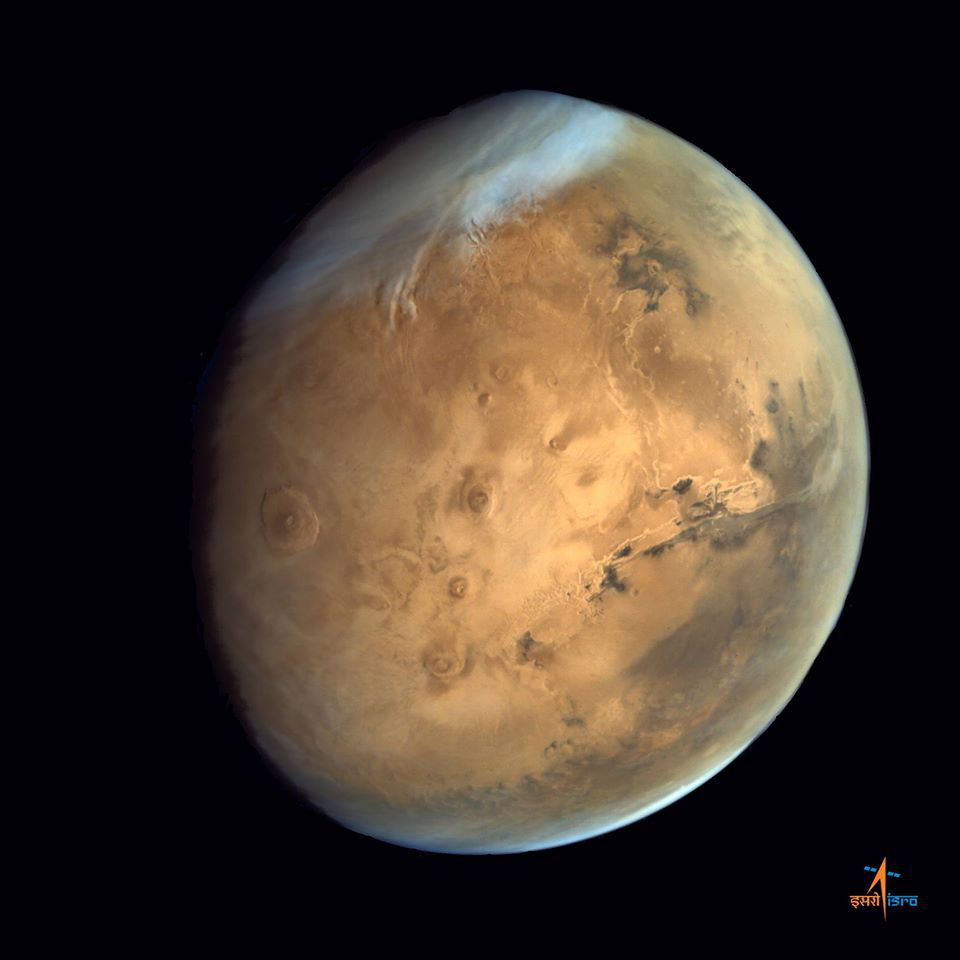
Olympus Mons, Tharsis Bulge trio of volcanoes and Valles Marineris from ISRO’s Mars Orbiter Mission.
Note the clouds and south polar ice cap. Credit: ISRO
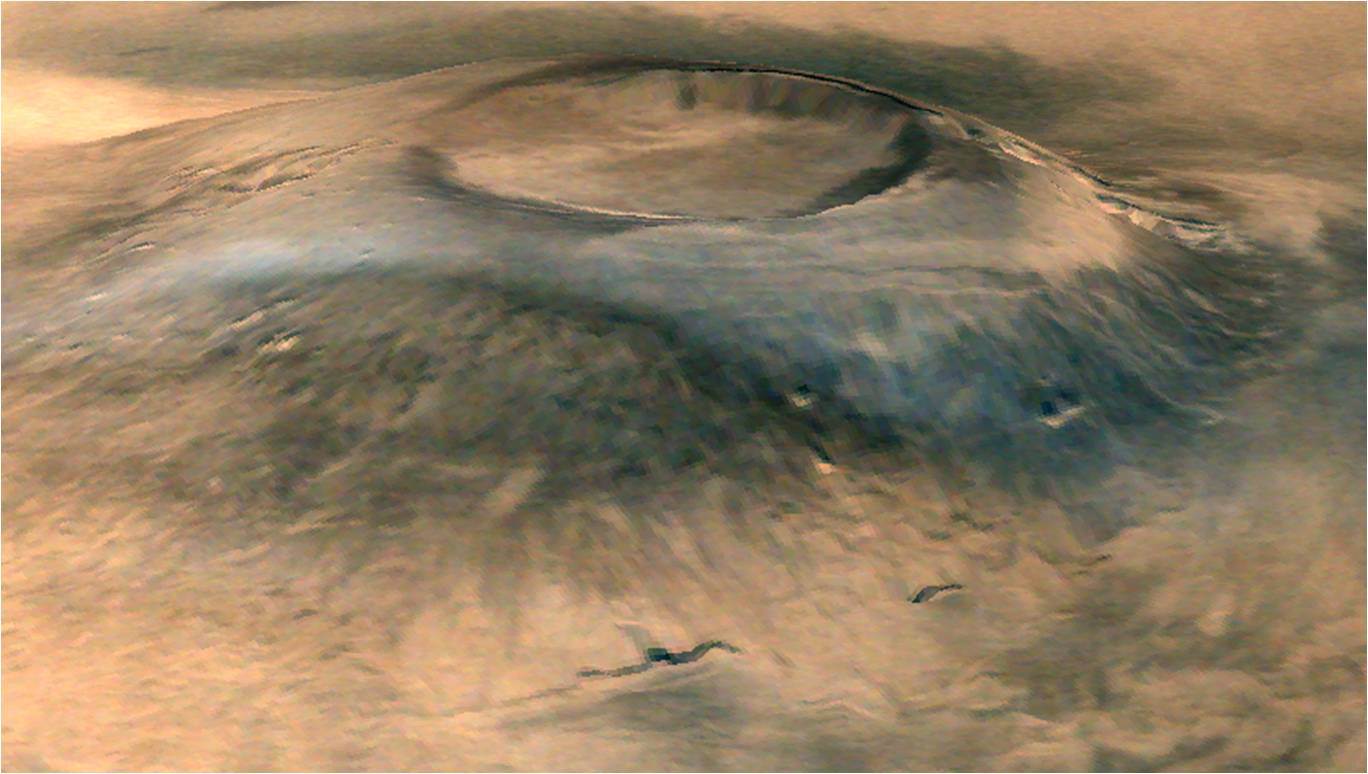
Spectacular 3D view of Arsia Mons, a huge volcano on Mars, taken by camera on India’s Mars Orbiter Mission (MOM). Credit: ISRO Story updated with more details and imagery
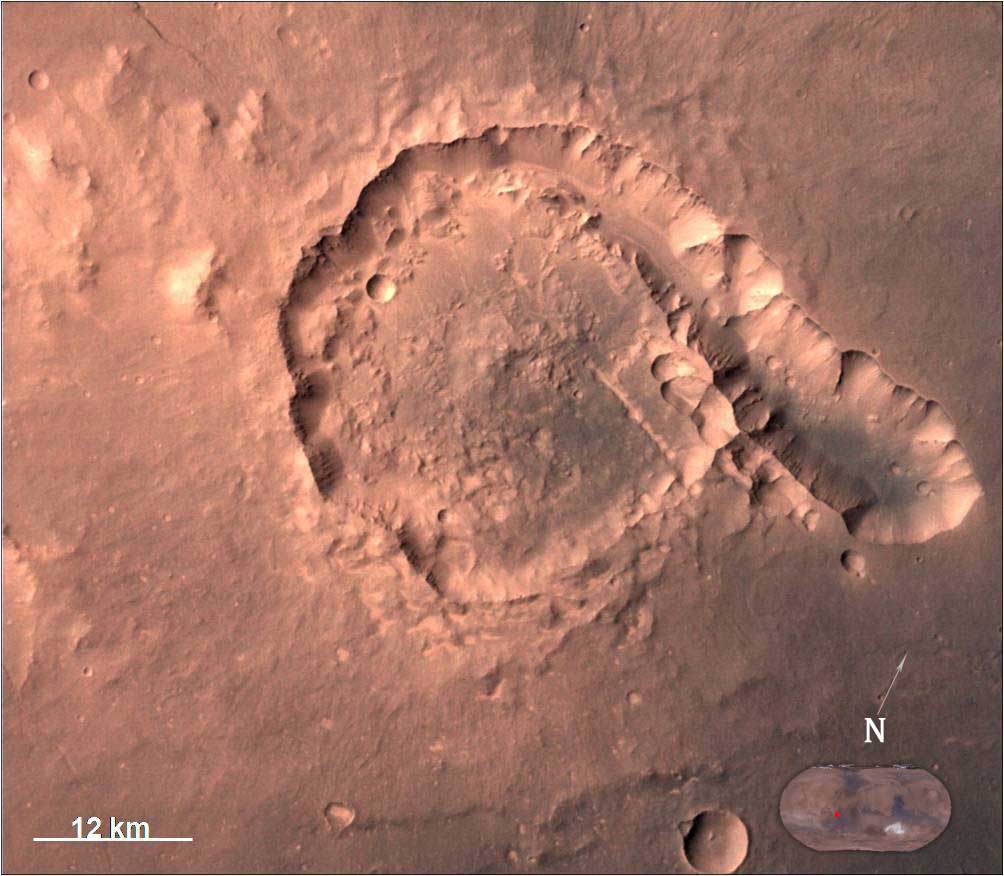
Pital crater is an impact crater located in Ophir Planum region of Mars,
which is located in the eastern part of Valles Marineris region.
This image is taken by Mars Color Camera (MCC) on 23-04-2015 at a
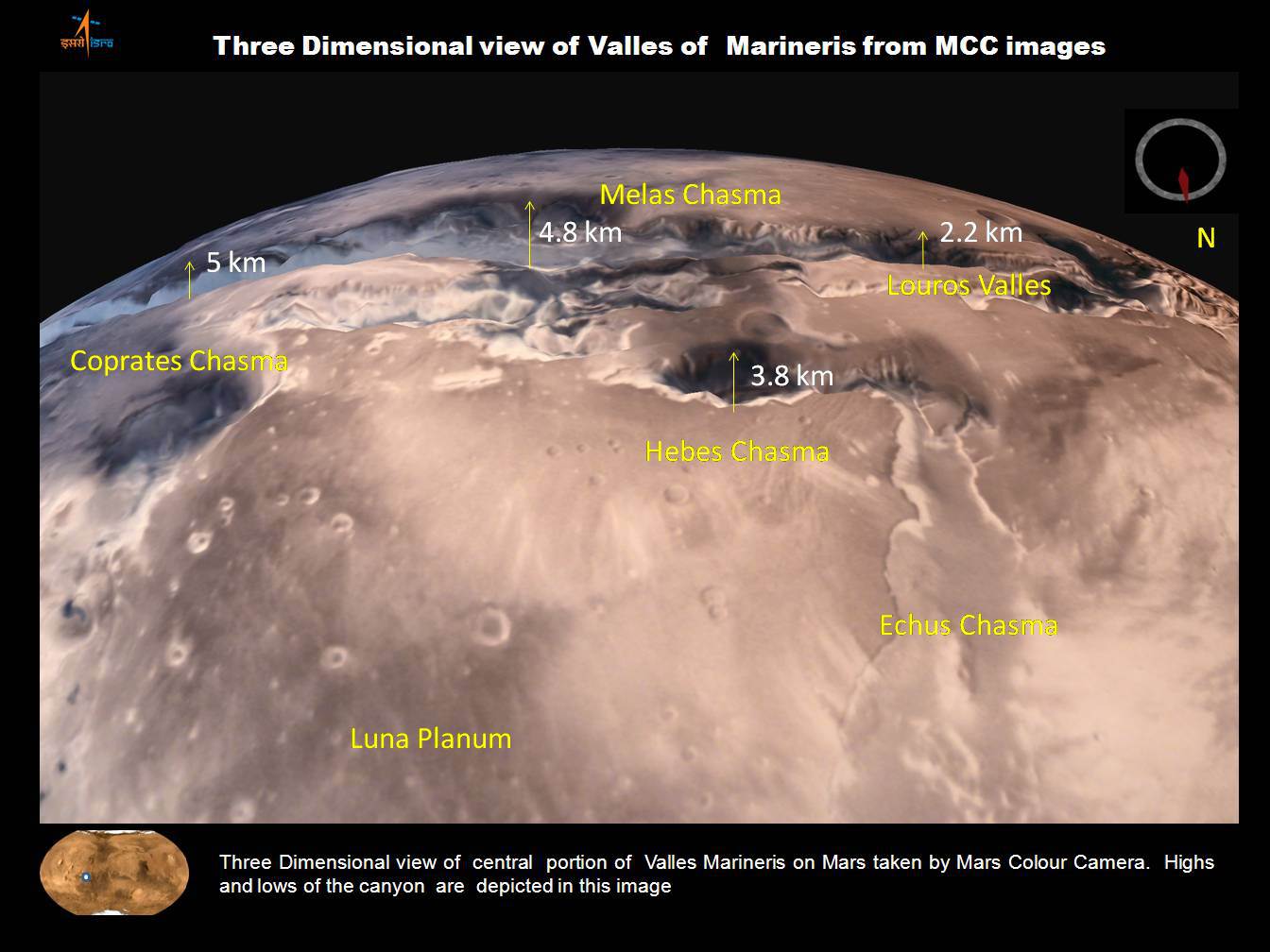
Three dimensional view of Valles Marineris center portion from India’s MOM Mars Mission. Credit: ISRO
is as much as 600 km wide and measures as much as 7 kilometers (4 mi) deep.
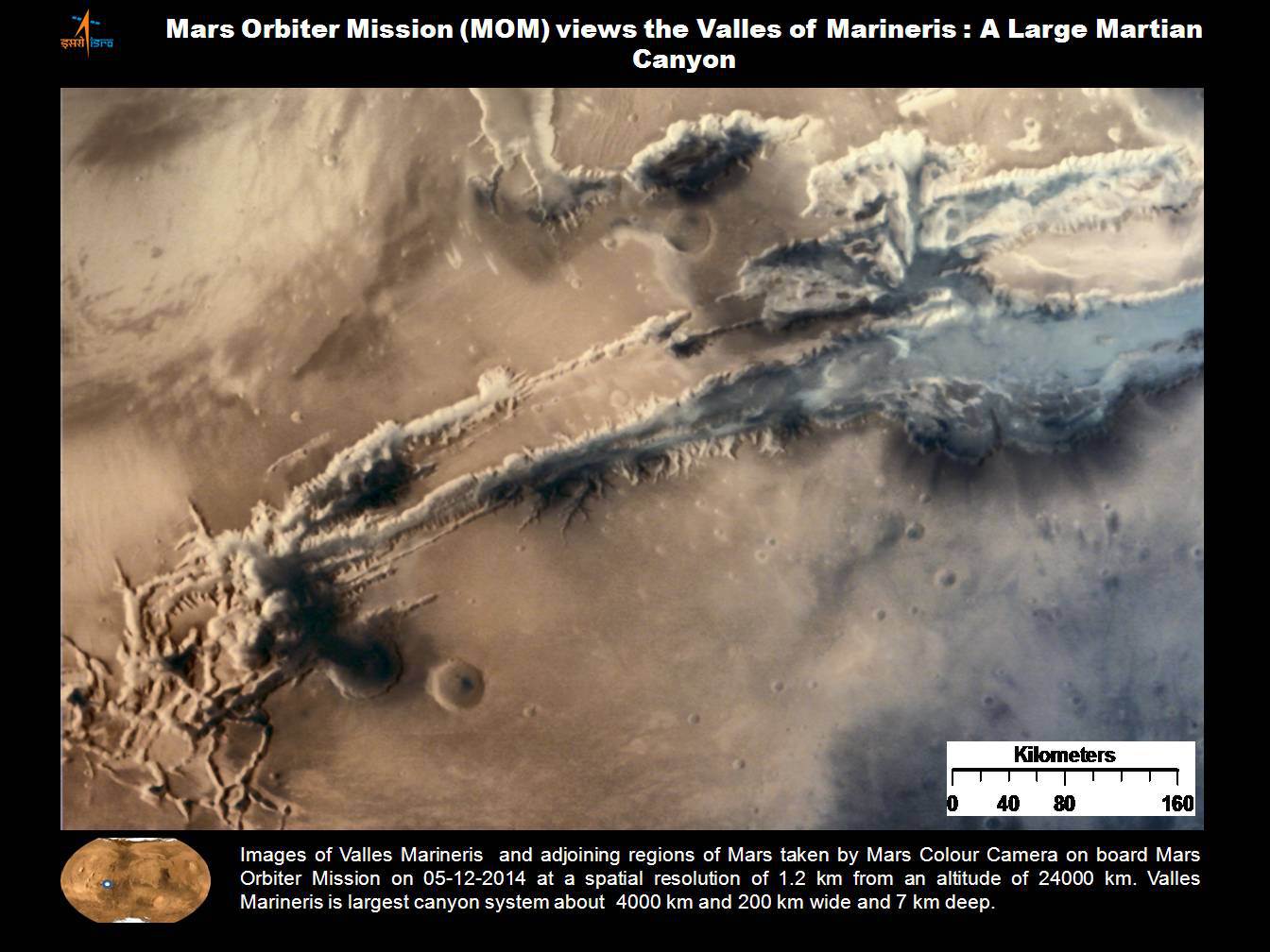
Valles Marineris from India’s Mars Mission. Credit: ISRO
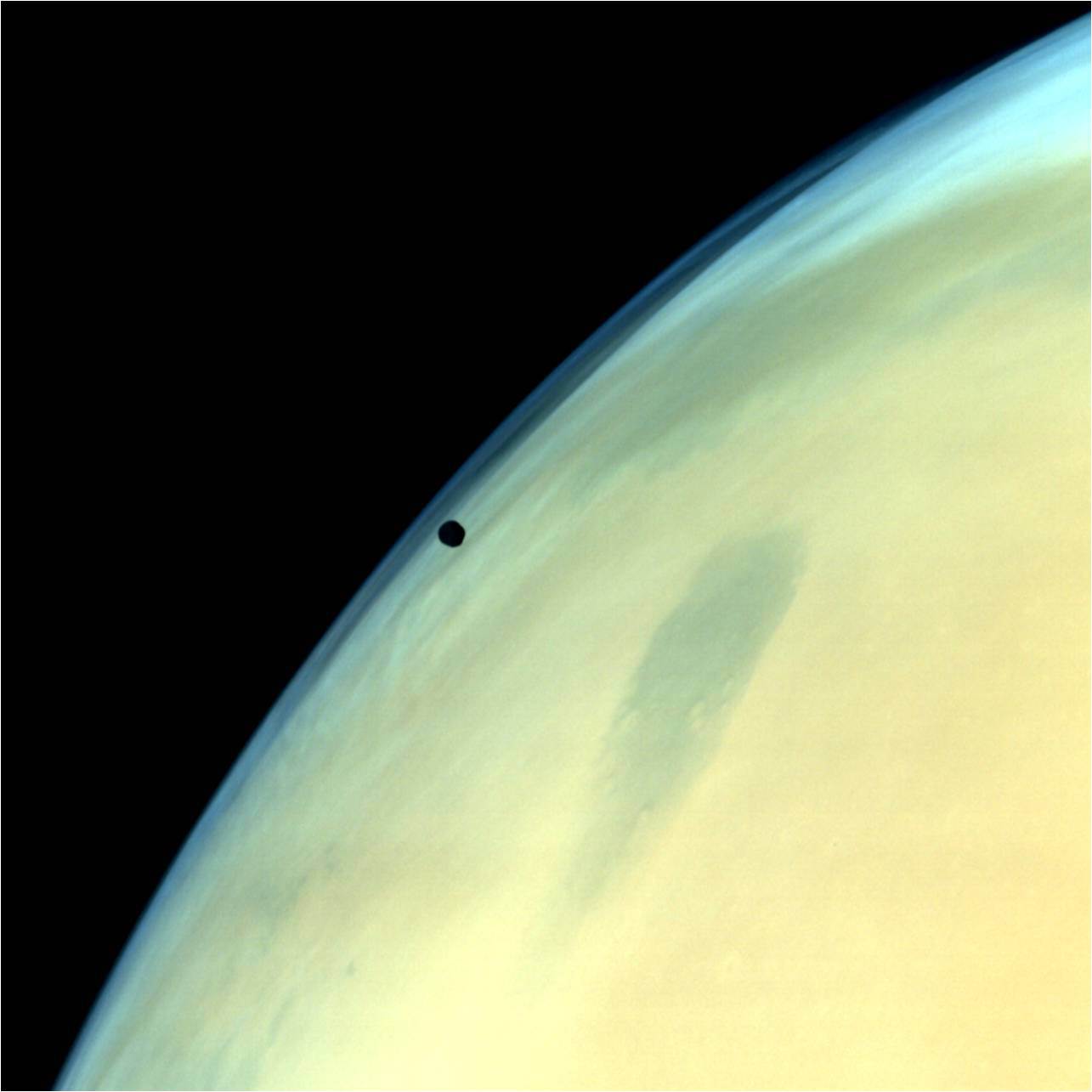
Phobos, one of the two natural satellites of Mars silhouetted against the Martian surface. Credit: ISRO

Higher resolution view of a portion of Valles Marineris canyon from India’s MOM Mars Mission. Credit: ISRO
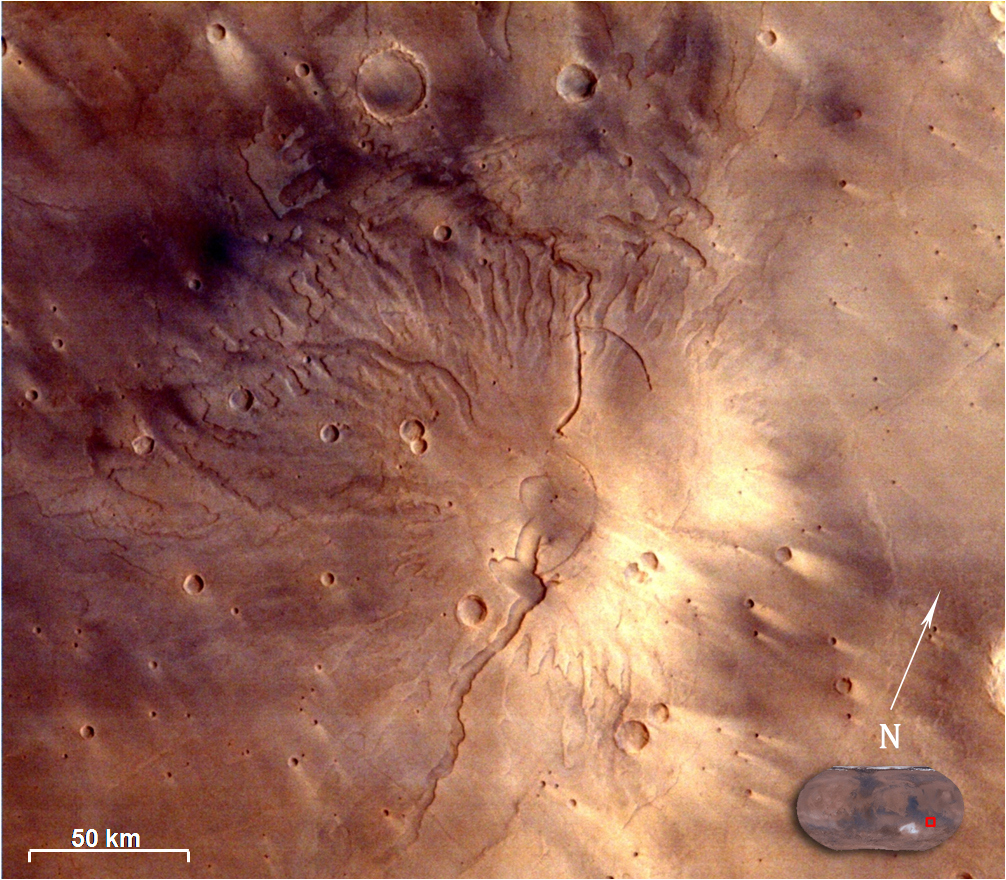
Image of Tyrrhenus Mons in Hesperia Planum region taken by Mars Color Camera (MCC)
on 25-02-2015 at a spatial resolution of 166m from an altitude of 3192km.
Tyrrhenus Mons is an ancient martian volcano and image shows its timeworn gullies and wind streaks. Credit: ISRO